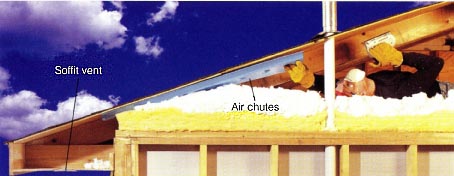
Good ventilation helps dissipate attic moisture and hot air in spring, summer and fall. It curbs mildew growth and structural rot, extends shingle life, prevents ice dams and , in summer, reduces cooling costs. To create airflow, place vents in the soffits or low on the roof to let fresh air in and add vents at or near the ridge to let air escape. Most building codes require 1 sq. ft. (.09 sq. m) of screened venting for each 150 sq. ft. (14 sq. m) of attic, ideally split half and half between lower and upper roof vents.
Use air chutes over exterior walls to keep the airflow pathway open, and in winter, make sure roof vents aren't blocked by snow (use a snow rake). In sunny climates, consult your local building inspector about adding a radiant barrier of shiny foil to the rafters’ bottom edges to keep the attic cooler.
Soffit Vents
The standard way of providing lower roof ventilation is with soffit vents. Rectangular vents are easy to install anytime: continuous soffit vents are most easily installed during new construction.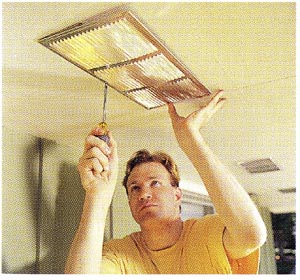
Rectangular vents. Drill starter holes, cut an opening between rafters using a jigsaw and attach the vent with self-tapping screws. Angle the louvers toward the house to block snow and debris -- and to look better, too.
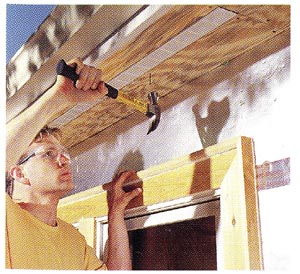
Continuous vents. These allow an even ventilation along the eaves but are difficult to retrofit in existing soffits. Be sure to leave a strong strip of plywood on both sides, at least the width of your palm.
Roof Vents
Attic heat rises and escapes through roof vents. The best time to add them is during re-roofing, but they can be added any time to improve ventilation.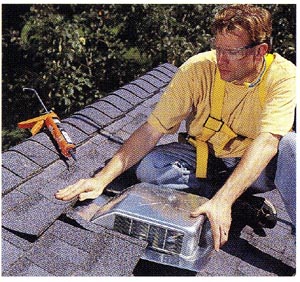
Roof cans. These are best for hip and pyramid roofs with a short ridge line. To install, cut through the shingles and sheathing, slip the tops of the vents under shingles, nail them down in front and seal by cementing shingles over the side flanges.
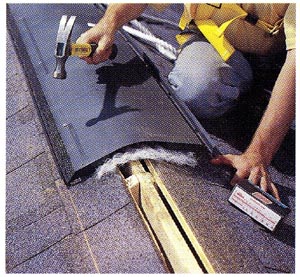
Ridge vents. These blend into the roof, distribute ventilation evenly along the ridge and are frequently used for vaulted or cathedral ceilings. To install the type shown, cut and remove a strip of shingles and sheathing along the ridge, nail down the vent and cover it with ridge cap shingles.
Gable and Turbine Vents
Gable and turbine vents can be less effective than other methods at consistently moving air. Both depend on wind speed: gable vents are affected by wind direction, too.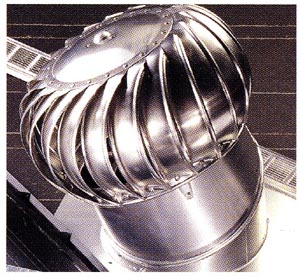
Turbine vent. Mount these near the roof’s ridge, on the least-visible side. When the wind blows, they spin and the turbine acts as an exhaust fan. They can be very effective but have a limited effect on hot, still days, and unbalanced units can be noisy.
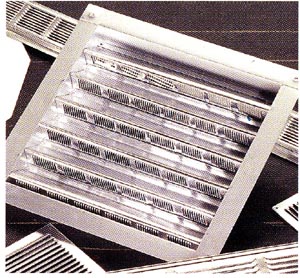
Gable vent. These are inexpensive and they leave the roof uncluttered. However, they are poor performers, as they tend to circulate air only near the gables. They work much better when used to supplement other vents.